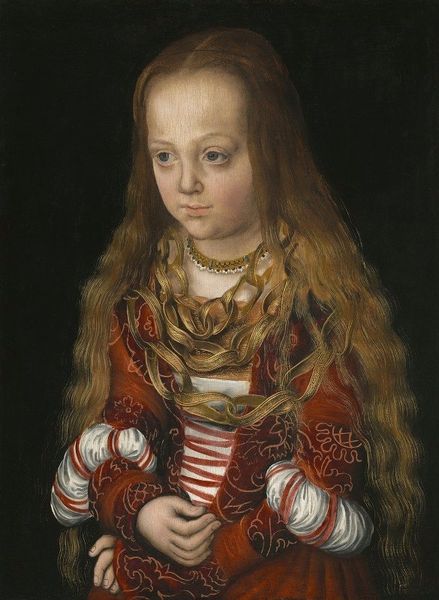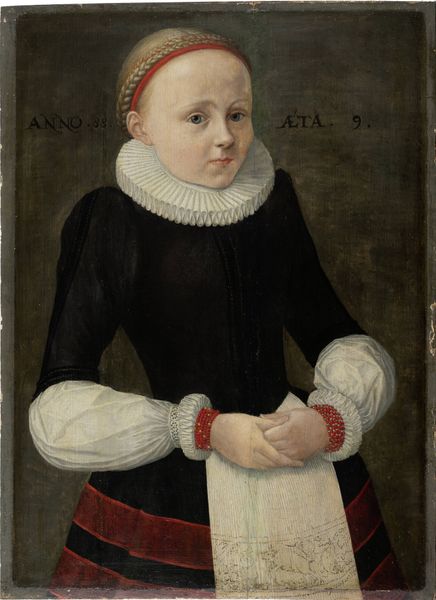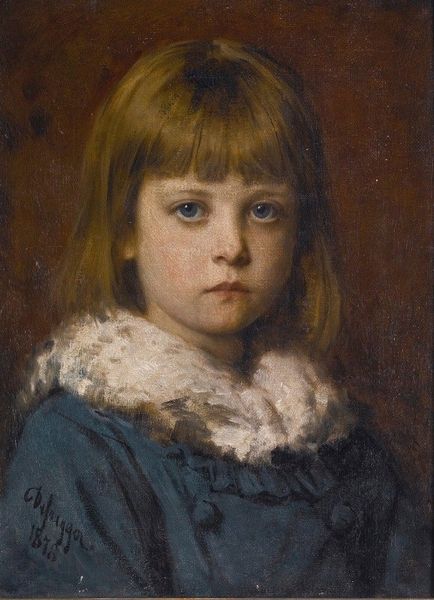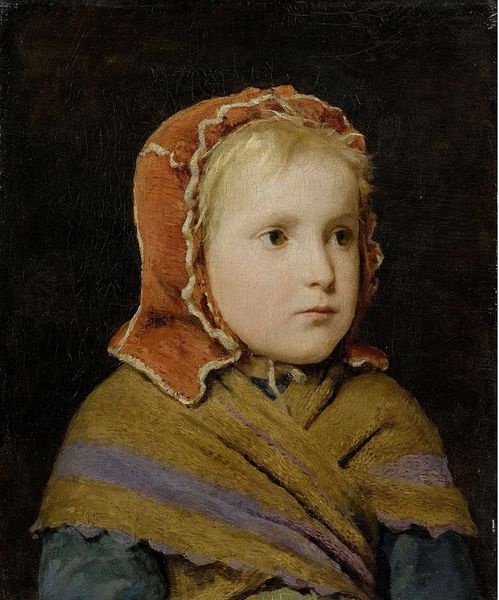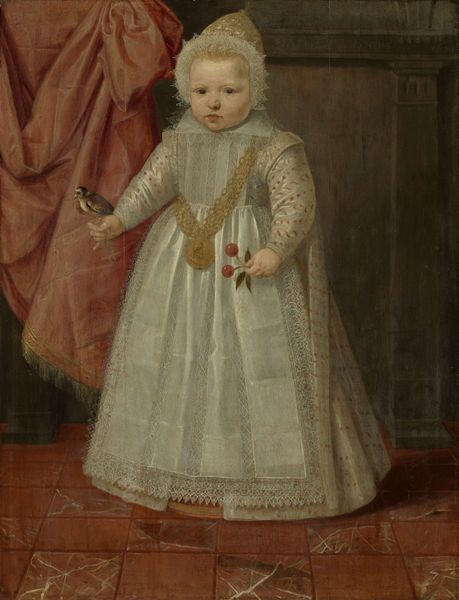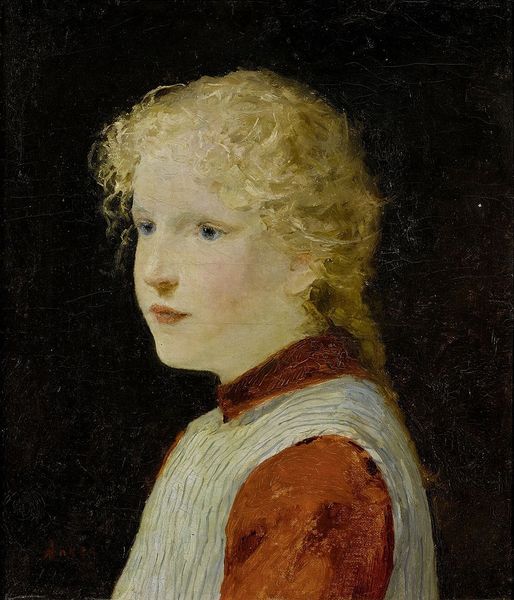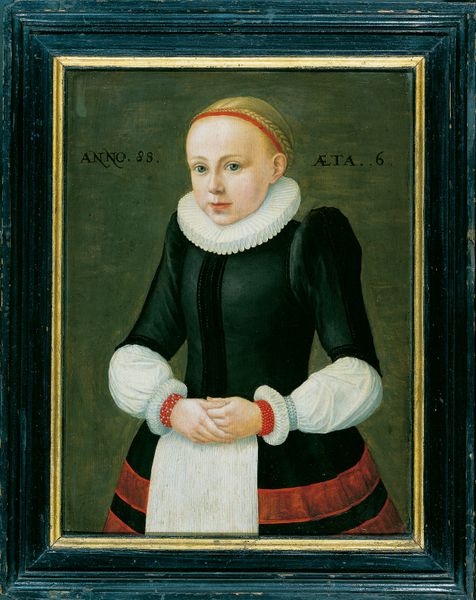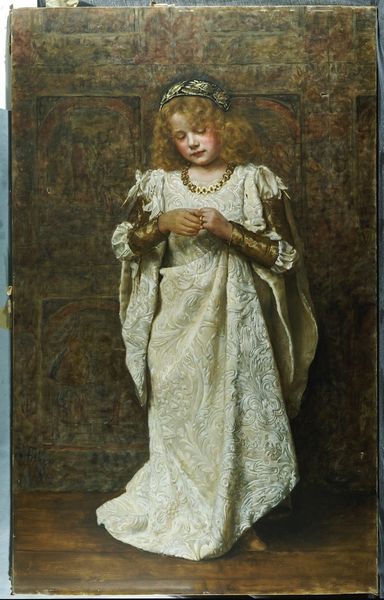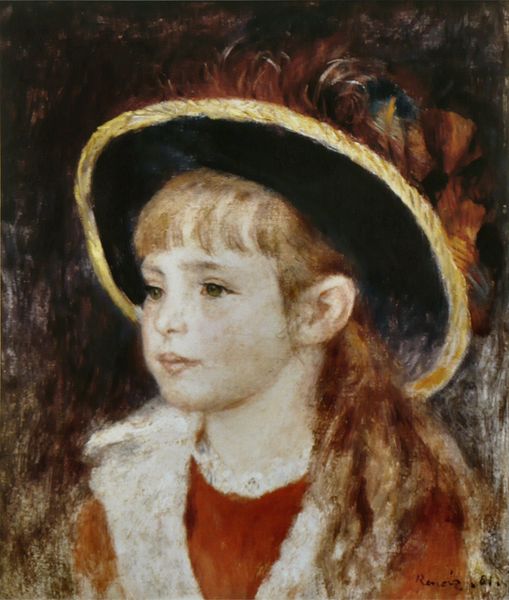
painting, oil-paint
#
portrait
#
figurative
#
painting
#
oil-paint
#
portrait reference
#
portrait head and shoulder
#
animal portrait
#
animal drawing portrait
#
portrait drawing
#
history-painting
#
facial portrait
#
northern-renaissance
#
portrait art
#
fine art portrait
#
celebrity portrait
#
digital portrait
Copyright: Public Domain: Artvee
Curator: Here we have Lucas Cranach the Elder's "A Prince of Saxony," painted circa 1517. An oil-on-panel portrait that really captures a specific moment in history. Editor: He looks like he just wants to go outside and play! There's something a little melancholic about him. The black background really makes him pop, like a precious jewel trapped in the dark. Curator: Precisely. Cranach uses the stark contrast to emphasize the Prince's noble status. Observe the meticulous detail in his clothing, the texture of the fabric. The gold trim and delicate floral crown all signify his wealth and position. Structurally, it's a standard Renaissance portrait, yet Cranach personalizes it. Editor: I love how his hands are positioned – kind of awkward and childlike. The fabric drapes across them like he’s trying to disappear beneath it. Makes me wonder what his life was really like, beyond the finery and expectation. Curator: A valid reading. We can deconstruct the symbolism even further. His direct gaze meets the viewer's, demanding attention, while the slightly receding hairline and pale skin hint at a vulnerability counteracting the obvious display of power. Editor: True, and it's interesting that despite the strict conventions of the time for painting royalty, he still feels very human. You see portraits where it looks like they are posing and uncomfortable, this just seems effortless. I also adore his hair—its honey-blonde color feels quite unique and adds a gentleness to the overall image. Curator: That tension between power and vulnerability is at the core. Cranach was a master of conveying the complexities of character within formal portraiture. The texture is especially important here; see the rough, tactile quality of the oil paint on the prince's sleeves versus the smoothed, almost glazed finish of his face? This duality enhances the painting’s semiotic richness. Editor: Looking at it again, there’s a real sadness there— a story behind those young eyes. Art that can do that is the art that resonates the longest. Curator: Indeed. Cranach provides not just a portrait but also a glimpse into the psychology of a young ruler. Its structural harmony enables that empathetic engagement.
Comments
No comments
Be the first to comment and join the conversation on the ultimate creative platform.
